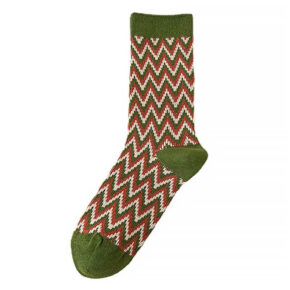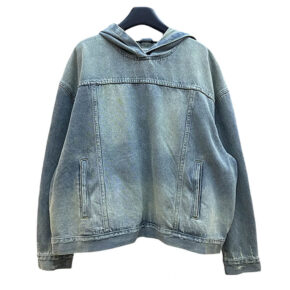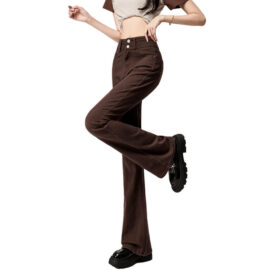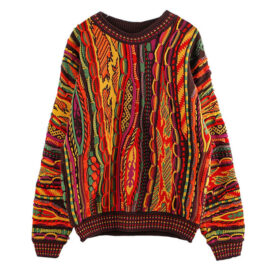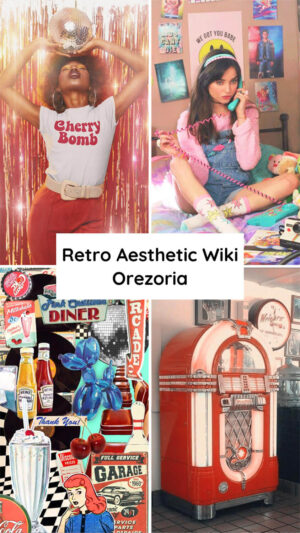
The retro aesthetic refers to an artistic style that draws inspiration from past eras, particularly the mid-20th century. It embraces design elements from the past, infusing them with a modern twist to create a visually striking and nostalgic look.
Key characteristics of the retro aesthetic include bold colors, vibrant patterns, and unique textures. Bright neon colors, geometric patterns, and intricate designs are commonly used to evoke a sense of energy and liveliness. Retro fashion and decor pieces often feature statement prints and eye-catching details, making them stand out in a crowd.
The retro aesthetic is rooted in nostalgia, invoking feelings of familiarity and longing for bygone times. It celebrates the cultural functions and design trends of the past, paying homage to iconic styles such as mid-century modern and vintage fashion. By combining these elements with modern materials and digital technologies, the retro aesthetic offers a fresh take on classic designs.
In summary, the retro aesthetic is a vibrant and visually striking art form that combines design elements from the past with a modern twist. It captures the essence of past eras while incorporating bold colors, patterns, and unique textures to create a unique and nostalgic visual experience.
Related aesthetics: 60s, 70s, 80s, 90s, Y2K, Artsy, Avant Basic, Boho, Bookstore Girl, Cottagecore, Light Academia, Dark Academia, Fairy Grunge, Fairycore, Goblincore, Grandmacore, Granola Girl, Indie, Old Money, Old School, Vintage
Full List of Aesthetics
The Origins of the Retro Aesthetic
The retro aesthetic draws inspiration from the design styles and cultural trends of the past, particularly from the mid-20th century. It is a celebration of iconic design movements such as mid-century modern and vintage fashion. The retro aesthetic is rooted in nostalgia, evoking a sense of familiarity and longing for bygone eras. The origins of the retro aesthetic can be traced back to a desire to embrace and reimagine the past, combining its timeless appeal with modern materials and digital technologies.
By revitalizing classic design elements and incorporating bold colors, vibrant patterns, and unique textures, the retro aesthetic offers a fresh and modern twist on timeless styles. It is an art form that allows us to appreciate the beauty of the past while infusing it with contemporary sensibilities. Whether in fashion, decor, or graphic design, the retro aesthetic is a testament to the enduring appeal of vintage charm and the ever-evolving nature of our personal style.
Aesthetic Blend of 60s, 70s, 80s, and 90s
The aesthetic blend of the 60s, 70s, 80s, and 90s creates a unique and captivating style that combines the key elements and fashion trends from each era.
The 60s introduced a bold and vibrant aesthetic characterized by psychedelic patterns and bright neon colors. Mini skirts, go-go boots, and mod-inspired fashion were all the rage, representing the youth rebellion and cultural revolution of the time.
Moving into the 70s, we see a shift towards a more relaxed and bohemian style. Earthy tones, bell-bottom jeans, and flowy maxi dresses became popular. The disco era of the late 70s introduced vibrant colors, sparkly fabrics, and platform shoes, reflecting the energetic and glamorous nightlife of the time.
The 80s brought about a bold and extravagant aesthetic with its neon colors, oversized shoulder pads, and exaggerated silhouettes. This era was defined by power dressing, punk rock influences, and the rise of hip-hop fashion.
The 90s took a more minimalistic approach with grunge fashion and streetwear becoming prominent. Denim, flannel shirts, and combat boots were popular among the youth. Pop culture icons like Kurt Cobain and the Spice Girls influenced the fashion trends of the decade.
These decades have greatly influenced the modern retro aesthetic, with popular styles and designs drawing inspiration from these key elements. Vintage-inspired clothing, accessories, and interior decor incorporating retro patterns and design elements are highly sought after.
Overall, the aesthetic blend of the 60s, 70s, 80s, and 90s showcases a wide range of trends and styles, each representing a distinct cultural and fashion era. The combination of these time periods creates a visually appealing and nostalgic aesthetic that continues to thrive in modern times.
Influences from the 20th Century
Influences from the 20th Century have made a significant impact on the retro aesthetic, integrating key fashion pieces that represent the unique style and trends of their respective decades. The ’70s plaid checkered sport jacket, the ’80s teal taffeta party dress, and the ’90s wrap around sunglasses are iconic examples that epitomize the retro aesthetic.
The ’70s plaid checkered sport jacket was a staple in the fashion scene of that era. With its bold patterns and vibrant colors, it exuded the free-spirited and laid-back vibe of the ’70s. Paired with flared jeans and platform shoes, this jacket became a statement piece that reflected the fashion influences of the time.
Moving into the ’80s, the teal taffeta party dress stole the spotlight. The vibrant hue and the exaggerated silhouette perfectly captured the boldness and extravagance that defined ’80s fashion. This dress, usually adorned with ruffles and sequins, was a must-have for any fashion-forward individual attending parties and events during that decade.
The ’90s brought a more minimalistic and futuristic aesthetic, showcased by accessories such as the wrap around sunglasses. These sunglasses featured sleek designs and a futuristic flair, mirroring the impact of digital technologies on fashion. The wrap around design provided a unique and edgy look, making them a popular choice among fashion enthusiasts.
By considering the influences from the 20th Century, fashion designers and enthusiasts have been able to create timeless pieces that balance nostalgia with a modern twist. The ’70s plaid checkered sport jacket, the ’80s teal taffeta party dress, and the ’90s wrap around sunglasses are just a few examples of how these iconic fashion items continue to inspire and shape the retro aesthetic today.
What actually is "nostalgia"?
Nostalgia is a powerful emotion that holds significant relevance to the Retro Aesthetic. According to Merriam Webster, nostalgia is defined as “a wistful or excessively sentimental yearning for return to or of some past period or irrecoverable condition.” This emotion taps into our longing for cherished memories and experiences from the past, often accompanied by a deep sense of affection and fondness.
In the fashion industry, nostalgia plays a pivotal role in shaping trends and consumer preferences. It influences the way we perceive and appreciate various styles and aesthetics, fuelling a desire for the familiar and comforting. By evoking nostalgic sentiments, fashion brands can create a strong emotional connection with their target audience and evoke a sense of nostalgia for a specific era or time period.
Nostalgia is closely tied to the repetitive nature of fashion trends. As Laver’s Law suggests, styles that were once considered fashionable become outdated and eventually resurface as retro or vintage aesthetics. This cyclical nature of fashion allows for the revival and reinterpretation of past trends, fueled by the nostalgic yearning for a particular aesthetic or time period.
Overall, nostalgia is a driving force behind the Retro Aesthetic, as it triggers our emotions and longing for the past. By embracing the elements and styles of bygone eras, the Retro Aesthetic satisfies our desire for the familiar, while adding a modern twist to create a unique and captivating fashion experience.
Difference Between Retro and Retro Core
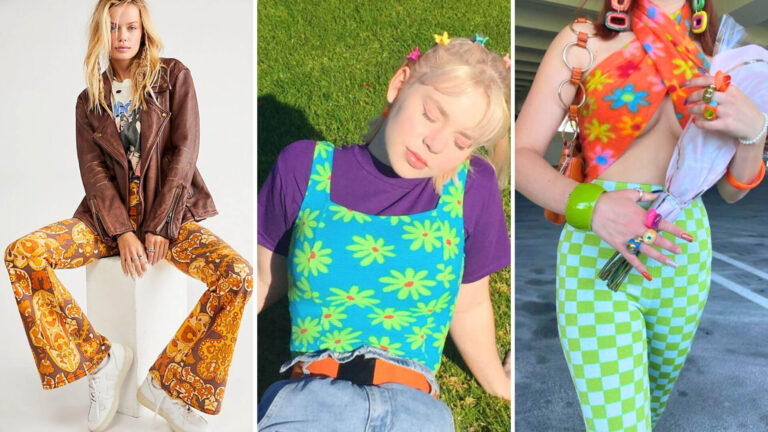
When it comes to fashion and aesthetics, the terms “retro” and “retro core” are commonly used to describe styles that draw inspiration from the past. However, there is a subtle difference between the two.
Retro refers to a style that consciously imitates trends from the recent past. It encompasses a broader range of time periods and can include references to various eras, from the 1920s to the 1990s. Retro fashion often involves taking design elements and fashion trends from the past and giving them a modern twist. It is characterized by bold colors, geometric patterns, and a mix of vintage and modern materials.
On the other hand, retro core is a subcategory of retro style that specifically focuses on the 1990s and early 2000s. It is a nostalgic homage to the vibrant and eclectic fashion trends of that era. Retro core style is known for its bright neon colors, bold patterns, and references to pop culture icons and music of the time. It celebrates the distinctive fashion statements and cultural evolution of the 1990s, often incorporating iconic items such as platform sneakers, chokers, and oversized denim jackets.
In essence, retro core is a more specific and niche subset of the broader retro aesthetic. It hones in on a particular time period and captures the essence and spirit of the 1990s in its design elements and fashion choices. So, if you’re looking to embrace a nostalgic style that perfectly captures the vibe of the 1990s, retro core is the way to go.
Difference Between Vintage And Retro
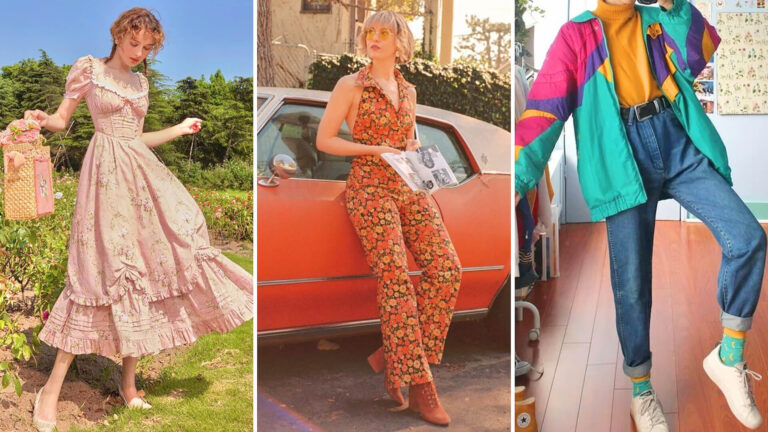
Vintage and retro are two terms often used interchangeably when discussing fashion and aesthetics. However, there is a distinct difference between the two.
Vintage refers to clothing or items that are authentic pieces from a specific time period in the past. These items are usually at least 20 years old and carry the charm and history of that particular era. Vintage clothing is sought after for its uniqueness and the way it embodies the style and craftsmanship of the past. The materials used in vintage clothing are often natural fabrics and the items may show signs of wear and age, adding to their character.
On the other hand, retro clothing refers to reproductions or imitations of vintage styles made with modern materials. Retro items are designed to capture the essence and aesthetic of a specific era, but they are newly produced. Retro clothing often incorporates the design elements and fashion trends of the past, but with a modern twist. These items provide an opportunity to embrace nostalgic styles without the limitations of age or wear.
In summary, vintage clothing is authentic pieces from a specific time period, while retro clothing is reproductions or imitations of vintage styles made with modern materials. Both offer an opportunity to incorporate unique and stylish elements from the past into your wardrobe, but with different origins and characteristics.
Retro Aesthetic Fashion and Outfits Guide
Retro aesthetic in fashion is all about embracing the styles and trends of past eras and infusing them with a modern twist. It is a celebration of the bold colors, intricate designs, and statement pieces that defined fashion in bygone decades. From the vibrant geometric patterns of the 1960s to the sleek and minimalistic silhouettes of the 1990s, retro fashion draws inspiration from various time periods to create a unique and nostalgic look.
Retro clothing offers a chance to explore and experiment with personal style, combining vintage elements with contemporary flair. With its emphasis on creativity, individuality, and a love for the past, retro aesthetic in fashion is continually evolving and contributing to the ever-changing landscape of the fashion industry. Whether it’s through the revival of pastel hues or the reintroduction of retro accessories, the retro aesthetic in fashion allows individuals to tell their own style story while paying homage to the fashion trends of yesteryears.
Retro Clothing
Retro clothing is a captivating collection of garments that effortlessly encapsulate the aesthetic trends from different decades, particularly the vibrant 80s and 90s. These clothing pieces pay homage to the bold and daring designs that defined those eras while infusing them with a modern twist.
One of the key elements that make retro clothing so distinct is the presence of unique hemlines. From asymmetrical skirts to high-low dresses, these unconventional designs add an eye-catching allure to any outfit. Additionally, retro clothing embraces a wide array of prints, ranging from geometric patterns to bold florals. These prints speak volumes and exude personality, making them a staple in the retro wardrobe.
When it comes to color palettes, retro clothing is all about making a statement. Bright neon hues, vivid primaries, and pastel revivals are just a few examples of the bold color choices that dominate this style. Mixing and matching these vibrant shades allows for endless creativity and self-expression.
Some popular examples of retro clothes include denim skirts paired with oversized 1980s sweaters, creating a harmonious blend of comfort and style. Striped sweaters paired with wide-leg pants effortlessly capture the essence of the 90s aesthetic. These unique combinations showcase how retro clothing harmonizes contrasting elements to create visually striking ensembles.
In conclusion, retro clothing is a delightful and timeless representation of the past, allowing individuals to infuse their personal style with the charm of bygone decades. With its unique hemlines, captivating prints, and vibrant color palette, retro clothing is the perfect choice for those seeking fashion that stands out from the crowd.
You can find more Retro clothing and accessories in our Retro Outfits Collection.
Try our new Aesthetic Outfits AI to Try-on Clothes.
Retro Accessories
Retro accessories are an integral part of completing the overall retro aesthetic. These accessories add the perfect finishing touches to retro outfits, creating a cohesive and authentic vintage look.
Statement belts are a popular choice among retro enthusiasts. Wide, bold, and often adorned with unique buckles, these belts cinch the waist and accentuate the hourglass figure commonly associated with retro fashion. They can be paired with high-waisted skirts or pants to create a striking silhouette.
Oversized sunglasses are another staple accessory in the retro world. These large and glamorous frames instantly transport us back to the golden age of Hollywood. Whether you opt for cat-eye, round, or square frames, these sunglasses add a touch of sophistication to any outfit.
Retro handbags are not only fashionable but also practical. Vintage-inspired designs, such as boxy shapes and top-handle styles, are commonly seen in retro accessories collections. These handbags, often made from leather or faux leather, are perfect for completing a retro look while carrying daily essentials.
Vintage-inspired jewelry is the perfect way to add a touch of elegance to a retro ensemble. Think bold statement necklaces, dangling earrings, and chunky bracelets. These pieces often feature intricate designs and gemstones, reminiscent of the jewelry trends from past decades.
Bold headbands are another accessory that instantly adds retro flair to any hairstyle. Whether it’s a thick, patterned headband or a vibrant scarf tied around the head, these accessories are versatile and can be used to create various retro-inspired hairstyles.
Overall, retro accessories play a crucial role in enhancing and completing the retro aesthetic. Statement belts, oversized sunglasses, retro handbags, vintage-inspired jewelry, and bold headbands are just a few examples of the accessories that help transport us back in time and bring the retro look to life.
Retro Makeup
Retro makeup is a style that embraces the characteristics and trends of bygone eras. It is a form of self-expression that allows individuals to recreate the glamour and allure of past decades.
One of the key elements of retro makeup is the use of bold colors. Vibrant eyeshadows in shades of blue, green, and purple were popular in the 1960s, while the 1980s brought about the trend of neon and electric hues. These colors are often paired with winged eyeliner, a timeless technique that accentuates the eyes and creates a dramatic look.
Another characteristic of retro makeup is the emphasis on matte lips. In the 1950s, red lips were a staple of the pin-up look, while in the 1990s, dark and dramatic lip colors took center stage. Matte lipstick adds a sophisticated touch and helps to create a vintage aesthetic.
Retro makeup encompasses a variety of styles and techniques from different eras. The 1950s pin-up look, characterized by flawless skin, winged eyeliner, and red lips, remains an enduring favorite. The 1980s saw a trend of bold and bright makeup, with neon colors dominating the scene.
Pop culture icons and celebrities have played a significant role in shaping the trends of retro makeup. Icons like Marilyn Monroe and Audrey Hepburn influenced makeup trends in the 1950s and 1960s, while Madonna and Cyndi Lauper popularized bright and edgy makeup in the 1980s.
Retro makeup allows individuals to experiment with different eras and embrace the beauty trends of the past. Whether it’s the classic elegance of the 1950s or the bold and vibrant looks of the 1980s, retro makeup allows for creative expression and a nod to the timeless styles of yesteryear.
Retro Hairstyles
Retro hairstyles encompass a wide range of popular hairstyles from past eras that have now become nostalgic and sought after. These hairstyles incorporate key elements from specific time periods, such as the 60s, 70s, 80s, and 90s, and each has its own unique characteristics and features.
One iconic retro hairstyle is the beehive, which originated in the 1960s. This voluminous updo is created by teasing the hair at the crown and gently shaping it into a high, rounded style. The beehive exudes a sense of elegance and sophistication, making it a popular choice for formal occasions.
The 70s introduced the mullet, characterized by its short hair in the front and long hair in the back. This bold and unconventional hairstyle was often associated with a rebellious and free-spirited attitude. Despite being divisive, the mullet has made a recent comeback as a trendy retro hairstyle.
The afro is a staple of the 80s and is known for its natural and voluminous appearance. It embraces and celebrates natural hair texture, creating a bold and empowering statement. The afro represents a cultural shift towards embracing one’s heritage and identity.
Feathered hair was a defining hairstyle of the 90s, characterized by its soft, feather-like layers. This style adds movement and texture to the hair, creating a youthful and carefree look. Feathered hair became synonymous with the fashion trends of the time, reflecting a more relaxed and effortless aesthetic.
These retro hairstyles are just a few examples of the popular hairstyles from past eras that have come back into fashion. Each hairstyle incorporates key elements from specific time periods, capturing the essence and charm of those eras. Whether it’s the elegance of the beehive or the boldness of the mullet, retro hairstyles offer a unique way to express personal style while paying homage to the past.
Tips on How to Dress Retro This Year
Dressing retro involves incorporating elements from past decades into your outfits, creating a unique and nostalgic aesthetic. One of the great things about the retro trend is that it allows for creative freedom, allowing you to mix and match different elements from various time periods to create your personalized retro look.
To dress retro, start by exploring the fashion trends and key elements from the past decades that inspire you. Popular retro aesthetics include styles from the 60s, 70s, and 90s. The 60s were known for bold colors, geometric patterns, and statement pieces, while the 70s embraced a more free-spirited and unconventional vibe with its vibrant earthy tones and eclectic mix of textures. The 90s brought forth a casual and carefree aesthetic with grunge influences, oversized silhouettes, and minimalist designs.
Once you’ve identified the retro aesthetics that resonate with you, incorporate these elements into your outfits. Experiment with vintage clothes, mixing them with modern materials for a modern twist. Don’t be afraid to play with bold patterns, bright colors, and intricate designs to truly capture the retro vibe.
Remember, dressing retro is about expressing your personal style and embracing the fashion trends of the past. So have fun with it and let your creativity shine through as you bring the retro aesthetic to life in your wardrobe this year.
How To Make Modern Clothes Look Vintage
If you want to achieve a vintage look using modern clothes, there are several techniques you can try. One of the easiest ways to add retro flair to your outfit is by incorporating retro accessories. Scarves, hats, and jewelry from past eras can instantly give your ensemble a vintage touch.
Another technique is to use vintage-inspired patterns and prints. Look for garments that feature polka dots, stripes, or floral designs, as these were popular motifs in past decades. Additionally, consider choosing colors that were trendy in previous eras. For example, earthy tones and pastels were popular in the 70s, while bold and vibrant colors dominated the 60s.
To truly achieve a vintage appearance, you can learn about distressing and aging techniques. By distressing your modern clothes, you can create a worn and lived-in look. This can involve techniques like sanding, bleaching, or ripping to simulate the natural wear and tear of vintage garments. Just make sure to practice these techniques on a small, inconspicuous area of the garment before applying them to the entire piece.
Incorporating these techniques and experimenting with different styles and colors can help you transform your modern clothes into a vintage look. Remember, the key is to have fun and create a personalized retro aesthetic that suits your taste and style.
Types of Retro Aesthetics
Retro aesthetics encompass a wide range of design styles and fashion trends from past decades, offering a nostalgic and timeless appeal. From the bold colors and geometric patterns of the mid-century to the intricate designs and statement pieces of the 70s and 80s, retro aesthetics hold a unique charm that continues to inspire contemporary art forms and personal style.
These aesthetics are characterized by their use of vintage-inspired elements, such as bright neon colors, graphic prints, and unique textures. Whether it’s in fashion, interior design, or graphic art, retro aesthetics provide a modern twist to the classic designs of the 20th century, embracing the nostalgia while incorporating the advancements of digital technologies and modern materials. Let’s explore some of the key types of retro aesthetics that have captivated and influenced the world of design.
60s Aesthetic
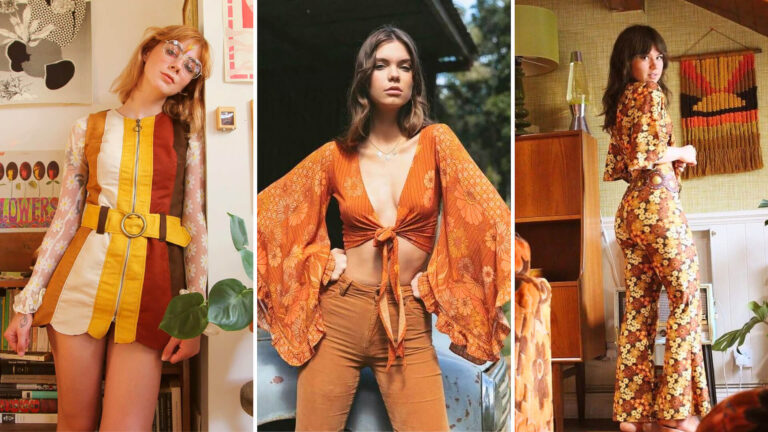
The 60s aesthetic was a revolutionary period in fashion and design, defined by its clean lines, bold geometric patterns, and a sense of rebellion against traditional norms. Influenced by the mod culture and the changing social and cultural landscape, the fashion trends of the 60s showcased two distinct styles.
The mod aesthetic, popularized by fashion designer Mary Quant, embraced a minimalist and futuristic approach. It featured clean designs, straight cuts, and a focus on simplicity and functionality. Mod fashion was all about sleek silhouettes, short hemlines, and bold geometric patterns. Shift dresses, mini skirts, and tailored suits became iconic staples of this era, symbolizing the youthfulness and liberation of the time.
On the other hand, the flower-power style emerged as a response to the chaos and unrest of the 60s. This style was characterized by its vibrant colors, psychedelic prints, and a rejection of societal norms. The clothing of this era embraced flowing fabrics, tie-dye, and bohemian-inspired elements. Fringed vests, bell-bottom pants, and kaftans became popular symbols of the flower-power movement.
Throughout the 1960s revival, fashion pushed boundaries and challenged conventional ideas of style. The mod aesthetic represented a futuristic and clean-cut look, while the flower-power style embodied a sense of freedom and rebellion. Both of these styles continue to inspire contemporary fashion and design, proving the lasting impact of the 60s aesthetic.
70s Aesthetic
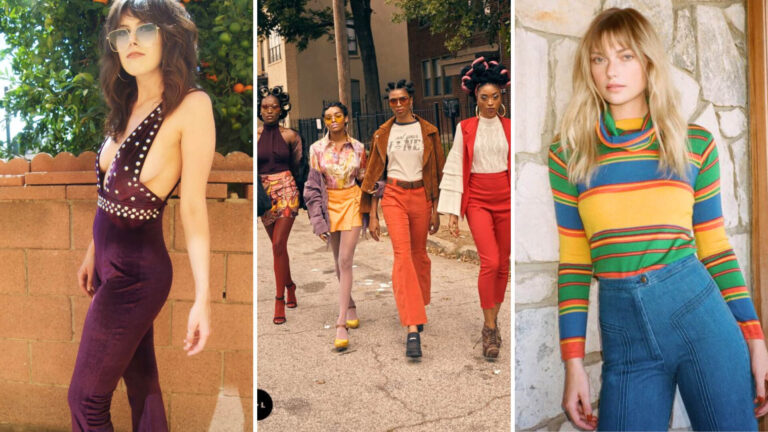
The 70s aesthetic was a defining era in the world of fashion, with its unique blend of bohemian and disco influences. This period was characterized by a diverse range of fashion elements that continue to inspire designers and fashion enthusiasts today.
One significant influence on the 70s aesthetic was the revival of 90s fashion trends. This era saw a resurgence of crochet, which became a popular fabric choice for dresses, tops, and accessories. Crochet added a bohemian and handmade touch to outfits, creating a sense of individuality.
Another iconic fashion element from the 70s aesthetic was the blazer-cut leather jacket. This style combined the sophistication of a blazer with the edginess of leather, creating a versatile piece that could be dressed up or down. The pointed collar was also a prominent feature during this era, adding a touch of sharpness and elegance to shirts and dresses.
When it comes to bottoms, flare trousers were the epitome of 70s fashion. These pants were characterized by their wide-legged silhouette, which flared outward from the knee down. Flare trousers added a sense of drama and movement to outfits, making them a popular choice for both casual and formal occasions.
The 70s aesthetic was a vibrant and expressive time in fashion, combining influences from the past with modern innovations. From crochet to blazer-cut leather jackets, pointed collars, and flare trousers, this era continues to inspire fashion trends even today.
80s Aesthetic
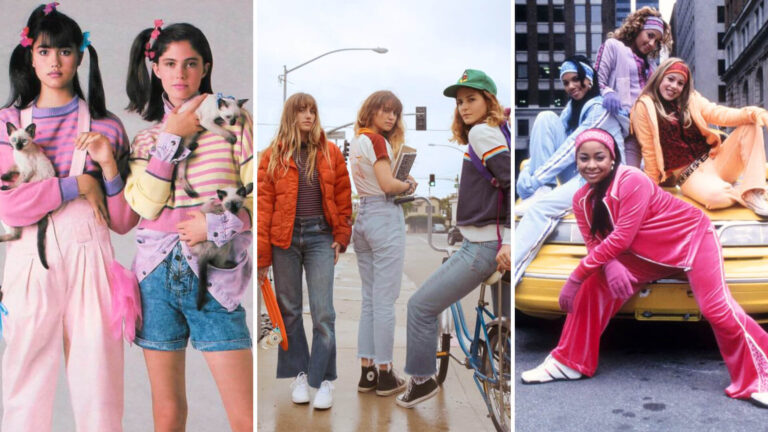
The 80s aesthetic is characterized by its vibrant colors, bold prints, and unique textures, which made this era unforgettable in terms of fashion and design. It was a time when people embraced an exuberant style that stood out from the previous decades.
In the 80s, it became common to see individuals sporting neon shades, such as electric blue, hot pink, and lime green. These bold and eye-catching colors were prominent not only in clothing but also in accessories and even interior design. The use of vibrant colors allowed individuals to express their bold personalities and stand out in a crowd.
Prints played a significant role in the 80s aesthetic. From graphic designs to geometric patterns, the fashion of the time was all about making a statement. Animal prints, such as leopard and zebra, were also popular during this era, adding a touch of wildness to outfits.
Unique textures were also a hallmark of the 80s aesthetic. Metallic fabrics, PVC, and sequins were widely used in clothing and accessories, creating a futuristic and glamorous vibe. These materials added a sense of dynamism and excitement to outfits, reflecting the overall spirit of the time.
The resurgence of the 80s aesthetic in recent years can be attributed to nostalgia and a rebellion against minimalism. People are drawn to the vibrancy and boldness of this era, finding inspiration in its unique style. The 80s aesthetic allows individuals to break free from monotony and embrace their individuality with its vibrant colors, bold prints, and unique textures.
90s Aesthetic
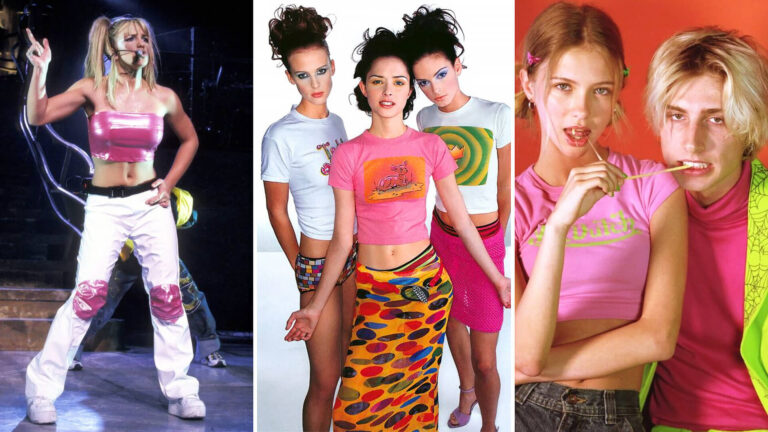
The retro aesthetic extends into the 90s, with a distinct style that captures the essence of the era. The 1990s fashion is characterized by a unique combination of strange geometric patterns, oversized broad-shouldered blazers, and puffy sleeves. This nostalgic style has made a comeback in recent years and continues to inspire modern fashion trends.
When it comes to retro 90s aesthetic clothes, there are a few key pieces that instantly transport you back in time. A striped sweater is a must-have, adding a touch of casual yet cute vibe to any outfit. Pair it with wide-leg pants for a relaxed and comfortable look that still exudes an effortlessly cool aesthetic.
The 90s aesthetic is all about embracing a casual and laid-back style. Think flannel shirts tied around the waist, denim jackets, and chunky sneakers. It’s a look that is both nostalgic and relevant to today’s fashion trends.
Incorporating elements of the 90s aesthetic into your personal style allows you to celebrate and pay homage to a beloved era. From oversized band t-shirts to scrunchies, there are endless options to create an outfit that feels both nostalgic and on-trend. So embrace the retro vibes of the 90s and make a statement with your fashion choices.
Y2K Aesthetic
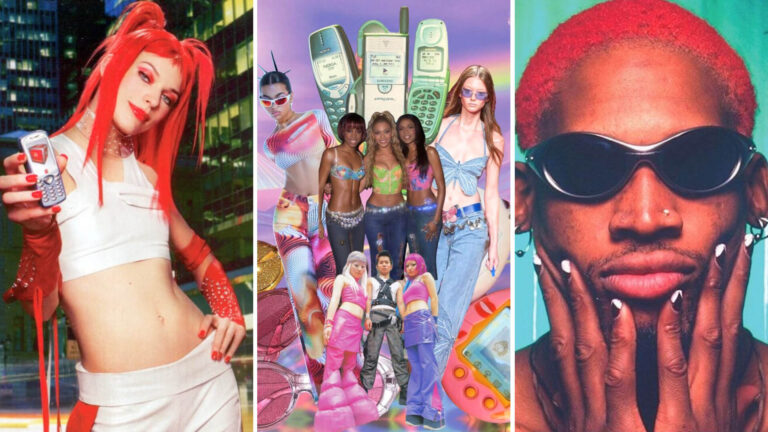
The Y2K Aesthetic is a retro aesthetic trend inspired by the fashion and design of the late 1990s and early 2000s. It encapsulates the bold and vibrant spirit of that era, with its futuristic elements and a delightful mix of technology and nostalgia.
At the heart of the Y2K Aesthetic are bold colors that demand attention. Think neon greens, hot pinks, electric blues, and metallic silver. These vibrant hues create a visually striking and energetic look that captures the essence of the late 90s and early 2000s.
The Y2K Aesthetic also embraces futuristic elements, incorporating technological motifs into fashion and design. This could mean clothing and accessories with cyber-inspired prints, holographic fabrics, or even LED lights. It’s a celebration of the digital age and the optimism that surrounded it at the turn of the millennium.
Key features of the Y2K Aesthetic include metallic fabrics that lend a shiny and futuristic quality to clothing, chunky accessories such as oversized sunglasses and statement belts, and low-rise jeans that were popular during that era.
Whether you want to nostalgicly revisit the late 90s and early 2000s or infuse a modern twist into your style, the Y2K Aesthetic offers a vibrant and bold approach to fashion and design. It’s a fun and playful throwback to an era of optimism and technological innovation.
Indie Aesthetic
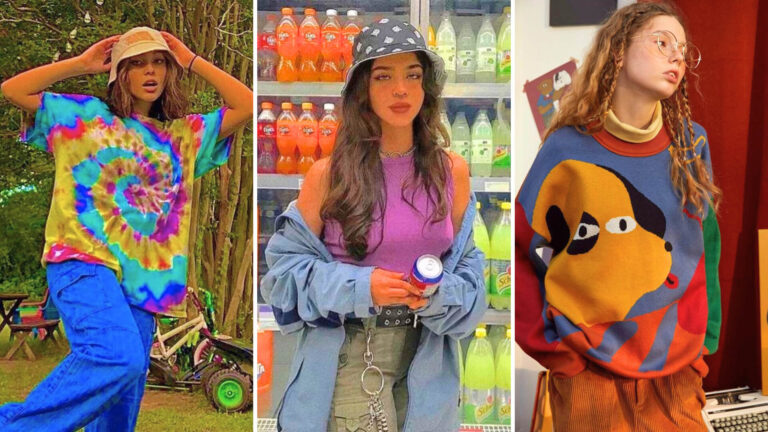
The Indie Aesthetic is a sub-category of the retro aesthetic known for its quirky and free-spirited style. It draws inspiration from various time periods, including the 60s, 70s, and 80s, and incorporates unique design elements to create a distinct and personalized look.
At the heart of the Indie Aesthetic is a focus on individuality and self-expression. It embraces a DIY ethos, celebrating handmade and one-of-a-kind pieces that reflect a person’s personal style. This aesthetic often combines vintage finds with modern materials, creating a harmonious fusion of the past and present.
In terms of fashion, the Indie Aesthetic is characterized by its love for statement pieces. Bell-bottom pants, with their wide-legged silhouette, are a popular choice among Indie fashion enthusiasts. Graphic tees featuring bold and eclectic designs are also highly favored, adding a touch of rebellion to outfits.
The Indie Aesthetic is more than just a fashion trend; it has become a cultural movement. It empowers individuals to embrace their unique style and express themselves authentically. Whether it’s through clothing, accessories, or home decor, the Indie Aesthetic offers a refreshing and unconstrained approach to the retro aesthetic, capturing the spirit of freedom and creativity.
Avant Basic Aesthetic
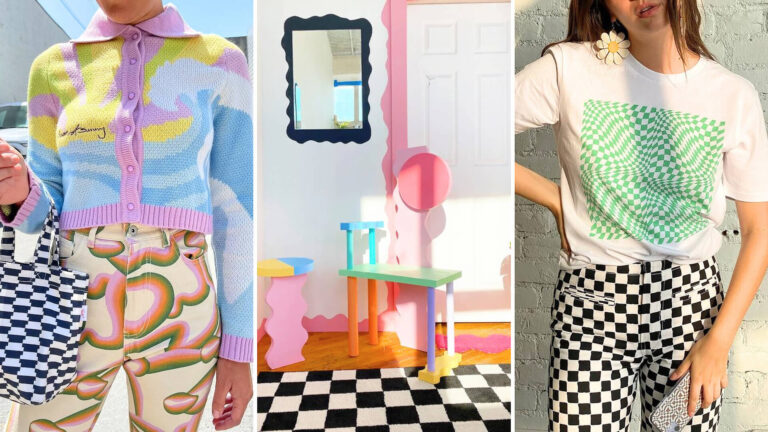
The Avant Basic Aesthetic is a captivating and contemporary take on the retro style, distinguished by its minimalistic design elements. Unlike other retro aesthetics, which often emphasize bold colors and intricate patterns, the Avant Basic Aesthetic embraces a more subdued approach, drawing inspiration from the minimalist and modern design styles.
At the core of the Avant Basic Aesthetic is a focus on clean lines and simplicity. This aesthetic celebrates the beauty of functionality, with a preference for sleek and streamlined designs. Neutral colors play a significant role in creating a sense of understated elegance, with shades like white, gray, and black dominating the color palette.
Patterns in the Avant Basic Aesthetic are minimalistic and often geometric, adding a touch of sophistication to the overall design. These patterns are usually subtle, incorporating simple shapes and lines, enhancing the aesthetic’s minimalist appeal.
The Avant Basic Aesthetic represents a harmonious blend of retro nostalgia and contemporary chic. By embracing simplicity and sophistication, this aesthetic offers a fresh and modern twist on the retro style. Whether incorporated into fashion, home decor, or graphic design, the Avant Basic Aesthetic is sure to make a bold and timeless statement.
Boho Aesthetic
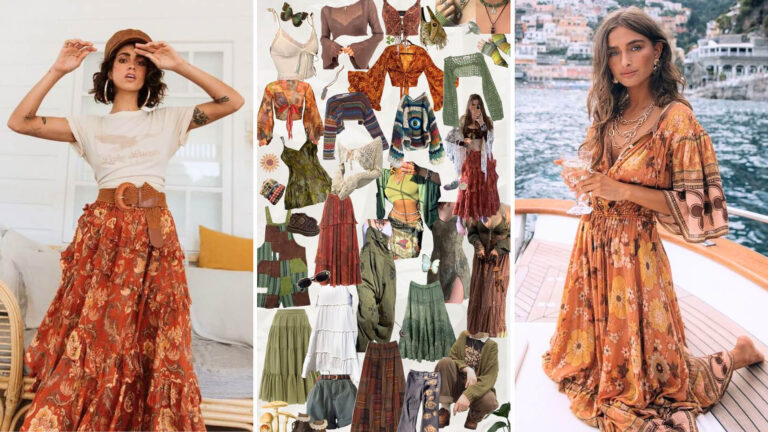
The Boho Aesthetic is a style that celebrates free-spiritedness and individuality, drawing influences from various cultures, music festivals, and the bohemian lifestyle. It has gained immense popularity in fashion and design for its laid-back and carefree vibe.
At the heart of the Boho Aesthetic is an emphasis on natural elements. This can be seen in the use of flowing fabrics like chiffon and cotton, which create a sense of movement and ease. Earthy colors such as browns, tans, and greens are often chosen to capture the essence of nature.
One of the defining characteristics of the Boho Aesthetic is its eclectic style. It embraces a mix of patterns and textures, combining floral prints, paisley designs, and tie-dye motifs to create a visually captivating look. Layering is also key, with the use of scarves, hats, and jewelry to add depth and complexity to outfits.
Vintage-inspired pieces play a significant role in achieving the Boho Aesthetic. Whether it’s a fringed suede jacket, a flowy maxi dress, or a floppy hat, these items evoke a sense of nostalgia and bohemian spirit. The combination of old and new, modern and vintage, creates a unique and personalized style.
In conclusion, the Boho Aesthetic is a trend that celebrates freedom of expression, natural elements, and an eclectic spirit. With its emphasis on individuality and vintage-inspired pieces, it has become a popular choice for those seeking a carefree and bohemian lifestyle.
Cottagecore Aesthetic
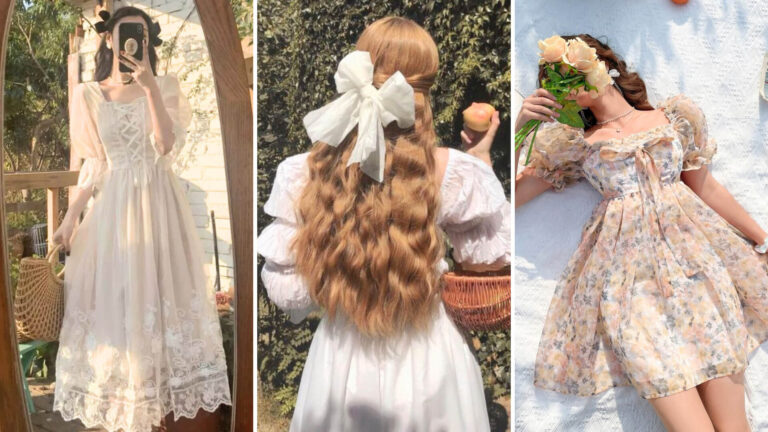
The Cottagecore Aesthetic is a romantic and vintage-inspired style that has gained popularity in recent years. Drawing inspiration from the rural countryside and simpler times, this aesthetic captures a sense of nostalgia and a longing for a slower pace of life.
Reminiscent of the 70s vintage aesthetic, Cottagecore is characterized by delicate frills, intricate laces, and charming peasant blouses. Soft and muted tones like pastel pinks, yellows, and greens dominate the color palette, adding to the overall vintage feel.
At the heart of the Cottagecore Aesthetic is a celebration of nature and the simple pleasures of rural living. It incorporates elements such as floral prints, gingham patterns, and earthy textures like linen, creating a sense of rustic charm.
Cottagecore fashion often features billowy dresses, oversized sweaters, and flowy skirts, emphasizing comfort and femininity. Accessories like straw hats, woven baskets, and dainty jewelry complete the look, adding to its vintage and whimsical appeal.
Beyond fashion, the Cottagecore Aesthetic extends to home decor and lifestyle choices. It embraces cozy and nostalgic elements like floral wallpaper, antiques, and handmade crafts.
In essence, the Cottagecore Aesthetic is a romantic and vintage-inspired style that harkens back to simpler times. With its frills, laces, and nod to the 70s vintage aesthetic, this trend has captured the hearts of many seeking a sense of tranquility and connection to nature.
Dark Academia Aesthetic
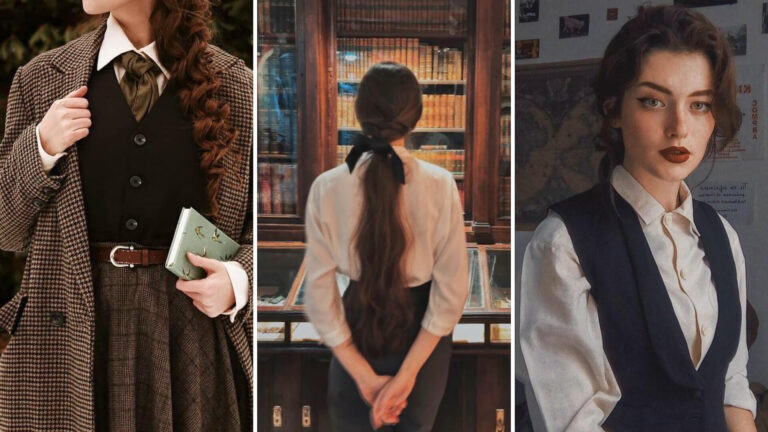
The Dark Academia Aesthetic is characterized by its dark and mysterious atmosphere, drawing inspiration from classic literature, academic institutions, and intellectual pursuits. This aesthetic has gained significant popularity among millennials and Gen Z, resonating with their love for literature and a nostalgic yearning for a time gone by.
The Dark Academia Aesthetic often features elements such as tweed blazers, crisp white shirts, pleated skirts, and knee-high socks. The color palette consists of rich, dark tones such as deep burgundy, navy blue, and forest green, which evoke a sense of old-world elegance.
Inspirations for the Dark Academia Aesthetic can be traced back to iconic works like “Dead Poets Society” and “Brideshead Revisited.” It romanticizes the notion of academia and intellectual pursuits, emphasizing a love for reading, writing, and learning.
Beyond fashion, the Dark Academia Aesthetic extends to other aspects of life, including decor choices, hobbies, and social circles. It embraces a minimalist and vintage-inspired interior, with dark wood furniture, leather-bound books, and antique objects.
The cultural significance of the Dark Academia Aesthetic lies in its celebration of knowledge and intellectual curiosity. It encourages individuals to explore literature, art, and philosophy, fostering a sense of introspection and self-discovery.
Overall, the Dark Academia Aesthetic has captivated millennials and Gen Z with its nostalgic appeal and its association with academia and intellectual pursuits.
Light Academia Aesthetic
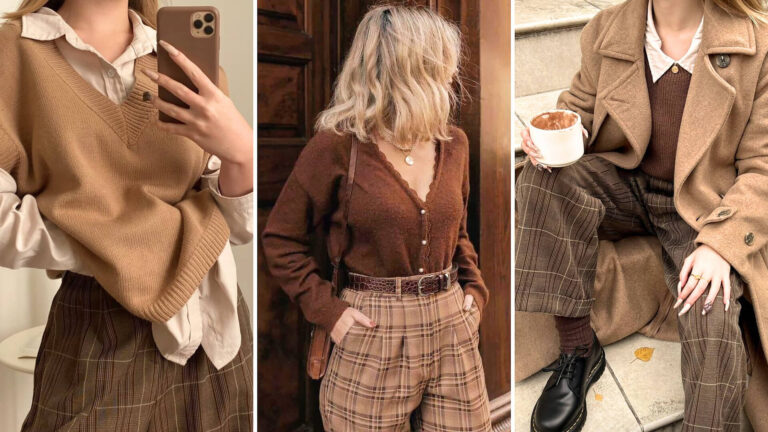
The Light Academia Aesthetic is a vintage-inspired style that draws inspiration from classic literature, academia, and a relaxed, intellectual vibe. It embraces soft neutrals and pastel colors, creating a warm and nostalgic atmosphere.
In terms of fashion, the Light Academia Aesthetic is characterized by timeless pieces such as oversized sweaters, flowy dresses, tailored blazers, and pleated skirts. Vintage fashion plays a significant role, with elements like lace, ruffles, and delicate details adding a romantic touch. This aesthetic celebrates femininity and elegance with a focus on modesty and sophistication.
Just like its Dark Academia counterpart, the Light Academia Aesthetic is heavily influenced by classic literature. Novels like “Pride and Prejudice,” “Little Women,” and “Jane Eyre” inspire the fashion, decor, and overall lifestyle choices of those who embrace this aesthetic. It is seen as a celebration of intellectual pursuits, with a love for reading, writing, and learning at its core.
The color palette of the Light Academia Aesthetic consists of soft neutrals like beige, cream, and ivory, as well as delicate pastel shades such as blush, lavender, and baby blue. These colors create a sense of tranquility and nostalgia, evoking a dreamy and whimsical atmosphere.
Overall, the Light Academia Aesthetic embodies a nostalgic and intellectual vibe through its connection to vintage fashion, classic literature, and a color palette that exudes softness and femininity. It offers a timeless and elegant style for those who appreciate the beauty of the past and seek to incorporate it into their modern lives.
Fairycore Aesthetic
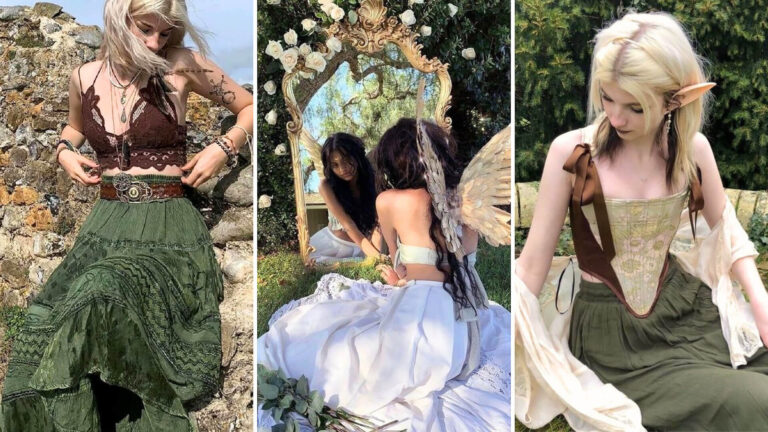
The Fairycore Aesthetic draws inspiration from the whimsical and fantastical elements of 2000s fashion, creating a mystical and ethereal vibe. One of the defining features of this aesthetic is the incorporation of elf ears and butterfly wings as mandatory accessories. These accessories add a touch of enchantment and make believers feel more connected to the fairy world.
What was once seen as loser-geeky is now considered hip and heartwarming. Fairycore enthusiasts embrace their inner child and find joy in embracing the magical aspects of life. It’s a celebration of nature, fantasy, and all things enchanting.
While many aesthetics are tied to specific eras, there are those that capture a vintage essence without being era-specific. The Cottagecore Aesthetic, for example, transports us to a simpler time with its focus on pastoral beauty and cozy cottages. The Vintage Aesthetic, on the other hand, embraces retro styles from various decades, combining different elements to create a unique blend of nostalgia and modernity.
In conclusion, the Fairycore Aesthetic celebrates the enchanting elements of 2000s fashion, making elf ears and butterfly wings mandatory accessories. It’s a heartwarming and hip aesthetic that embraces all things magical. And while there are aesthetics tied to specific eras, there are also those that capture a vintage essence in a timeless and unique way.
Retro Aesthetic in Music and Pop Culture
The retro aesthetic has had a significant impact on music and pop culture, influencing fashion, design, and overall cultural trends. This timeless style has transcended time and continues to captivate audiences across generations.
In the music industry, the retro aesthetic has shaped not only the sound but also the visual representation of artists. From album covers to music videos, the influence of the retro aesthetic can be seen in the deliberate choice of bold colors, geometric patterns, and vintage-inspired imagery. This fusion of old and new creates a sense of nostalgia and familiarity while giving it a modern twist.
Many musicians have embraced the retro aesthetic, blending classic sounds with contemporary production techniques. Artists like Bruno Mars, with his infectious blend of funk, R&B, and soul, and Tame Impala, drawing inspiration from psychedelic rock of the 60s and 70s, are perfect examples of the successful revival of retro-inspired music.
Furthermore, the retro aesthetic has permeated the world of film and television, shaping set designs and costume choices. Films and shows often incorporate elements from past decades, utilizing retro-inspired decor pieces, fashion trends, and even the use of analog technologies. By incorporating these nostalgic elements, the retro aesthetic adds depth and authenticity to the stories being told.
The Retro Aesthetic in Home Decor
The Retro Aesthetic in home decor has made a resounding comeback in recent years, with a growing fascination for all things vintage. A key influence in this revival is the iconic mid-century design, which emphasizes functional wooden designs, clean curved lines, and muted tones.
Mid-century furniture, such as the famous Eames chair and tulip table, are being embraced once again for their timeless appeal and their ability to effortlessly blend into any interior design style. These pieces epitomize the retro aesthetic with their sleek lines and simple yet elegant forms.
Recognizable colors and prints from the 1960s and 1970s are also experiencing a resurgence in popularity. Bold and vibrant hues like avocado green, mustard yellow, and burnt orange are being incorporated into retro-inspired home decor, adding a playful and energetic vibe to any space.
Prints like polka dots, geometric patterns, and funky floral motifs are also making a statement in retro-inspired interiors. These recognizable prints add a sense of nostalgia and vintage charm, transforming any room into a homage to the past.
Incorporating elements of the retro aesthetic in home decor allows for a unique and personal style that pays tribute to the design trends of the mid-century era. By combining functional wooden designs, clean curved lines, and recognizable colors and prints, homeowners can create a space that exudes vintage charm and captures the essence of the retro aesthetic.
Future of Retro Aesthetic Beyond 2024
The retro aesthetic is not just a passing trend; it is a timeless style that will continue to evolve and thrive beyond 2024. One of the key ways in which the retro aesthetic aligns with future fashion trends is through its connection to sustainable fashion and the growing push toward ethical practices. As consumers become more mindful of the environmental and social impact of their clothing choices, they are turning to vintage and second-hand pieces, as well as retro-inspired garments made from eco-friendly materials. The retro aesthetic perfectly fits into this movement, as it celebrates the reuse and repurposing of fashion from past eras.
Another reason why the retro aesthetic will remain popular in the future is its ability to evoke a sense of nostalgia and familiarity. In an increasingly fast-paced and uncertain world, individuals seek comfort and stability, and the retro aesthetic provides just that. Whether it’s the fashion, the interior design, or the music, the retro aesthetic allows people to reconnect with the past and find solace in its familiarity.
The timeless appeal of the retro aesthetic lies in its ability to transcend time and create a sense of individuality. The retro aesthetic celebrates unique personal style and encourages self-expression through fashion and design choices. This is why it will continue to resonate with individuals seeking to stand out and make a statement.
Designers can draw inspiration from past eras to create innovative designs that blend the old with the new. The mid-century modern and art deco styles, in particular, have had a significant influence on the retro aesthetic and will continue to shape its future. The clean lines and functional designs of mid-century modern furniture, as well as the glamorous and opulent details of Art Deco, offer endless possibilities for contemporary designers to create fresh and exciting interpretations of the retro aesthetic.
In conclusion, the future of the retro aesthetic beyond 2024 is bright. Its alignment with sustainable fashion, its ability to evoke nostalgia and comfort, its timeless appeal, and its influence in design make it a style that will continue to captivate and inspire for years to come.
